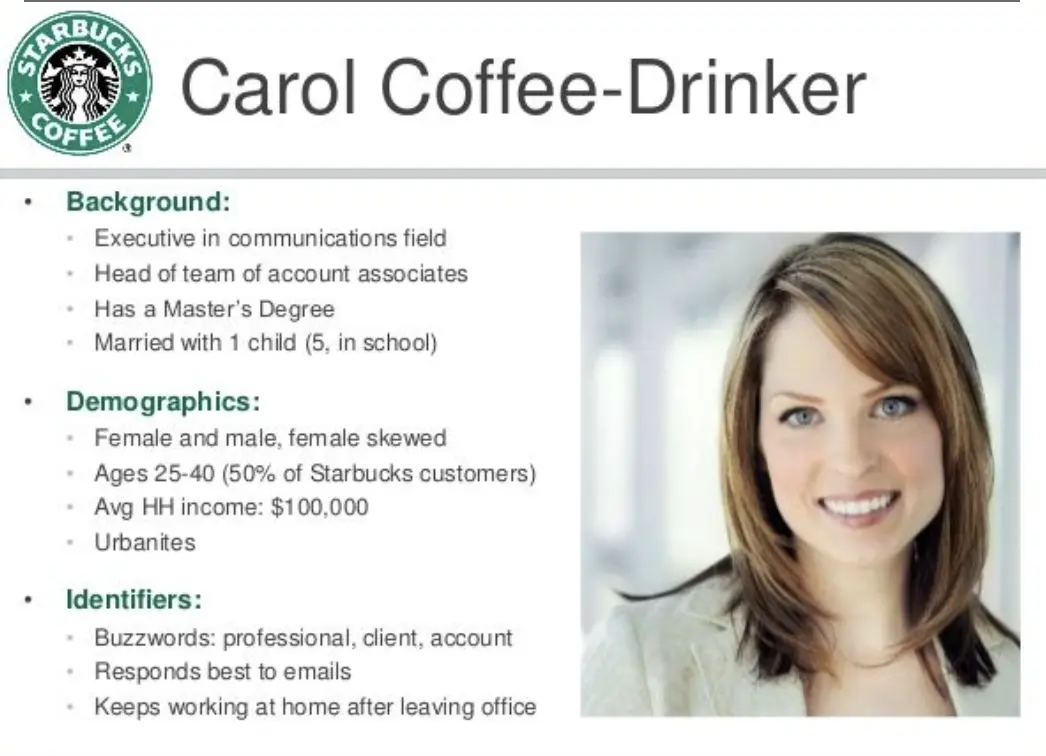Highlights:
- Have your user personas evolved in the right direction?
- Learn the value effective user personas bring to your marketing strategies
- Find out how to craft an effective user persona profile, plus access a complimentary user persona template
- See why user personas + personalized landing pages are a perfect match
Remember when user persona profiles like Outdoor Owen, Busy Betsy, and Techie Tina were all the rage? These buyer persona archetypes once served as a strategy for bridging the gap between businesses and their customers.
They aren’t serving the same purpose anymore.
As marketing has evolved, professionals are finally realizing that user personas like these are too oversimplified and just aren’t effective anymore. To map out user personas that are actually helpful, you need to dig deeper for real customer insights.
It’s less about categorizing potential customers into boxes and more about deciphering the habits, triggers, and values that drive someone’s decision-making. Today’s user personas look more like a Venn diagram, representing the overlap of various customer traits and motivations, rather than a flat, defined character.
Ahead, we’ll discuss the importance of user personas in your marketing strategy and creating user personas that make sense.
What is a user persona?
A user persona is a representation of your ideal customer based on real data and market research, sometimes using fictional personal details. Sometimes known as Ideal Customer Profiles (ICPs), a user persona encapsulates the behaviors, goals, motivations, and pain points of your target audience, providing marketers with a framework that helps tailor strategies to resonate with your target more precisely.
Unlike buyer personas of the past, today’s user personas don’t simply summarize demographic data – they dive into the “why” and the psychographic details that are behind a user’s behavior.
User personas are often crafted based on the following data:
- Demographic data: While this should not fully inform a user persona, basic demographic segmentation information like age, gender, location, income level, and education are still essential.
- Psychographic data: Information like lifestyle, marital status, values, interests, attitudes, and behaviors provide insight into the emotional and psychological factors that influence purchasing decisions.
- Behavioral data: How do customers interact with your product or service? What do their buying habits, usage patterns, decision-making processes, and social media interactions look like? Knowing this information can offer invaluable insights into how to position your marketing efforts.
- Goals and challenges: What are your customer’s pain points? What are they trying to achieve? How can your product or service make their daily lives better? This is key in creating user personas that are effective.
Some marketers may wonder if user personas are truly needed in a successful marketing strategy. The truth is that user personas may serve several key functions and are worth investing time and effort into. By using personas to drive your marketing strategy, you’ll benefit from:
- Personalization: It helps you understand your customers on a deeper level, so you can tailor your marketing messages to speak directly to their needs.
- Product development: User personas can help improve products because they give insight into features and benefits that are most valuable to your target audience.
- Targeted marketing: One of the biggest benefits of using personas is that you can focus your marketing efforts on audience segments that have the highest chances of converting, which will maximize your ROAS.
- Consistency: It’s always a good idea to deliver a seamless brand experience, and having clear user personas in place ensures that your messaging resonates with them regardless of the platform they encounter your brand on.
How do you create a user persona?
Techie Tina may have been defined by her job title, education level, and years of experience. Today’s user persona needs to be much more detailed and creating it requires research, analysis, and thought.
Follow these steps when creating user personas:
- Gather data: You’ll begin your user persona work by collecting both qualitative and quantitative data about your existing customers. Starting with actual data from real users who are already paying for your product or service will give you a wealth of information about their decision making process, their use cases, their budget, how they first heard of you, and more. Use surveys, interviews, and analytics to gather demographic, psychographic, and behavioral data.
- Identify patterns: What do your customers have in common? Perhaps the majority of your customers work in the Finance or Sales departments. Maybe your product has helped your customers expedite their processes significantly. Group your customers based on similar characteristics, user needs, behavior patterns, and pain points.
- Develop ideal customer profiles (ICPs): Here is where your user personas come together. Based on the data and patterns you’ve identified, start putting together detailed user persona profiles that include demographics, goals, motivations, pain points, buying behaviors, and use cases.
- Validate your personas: Now that you’ve crafted your personas, test them out by comparing them against actual customer data and feedback. Make adjustments and iterations as needed to accurately reflect your target audience and their evolving needs.
Here’s a good user persona example:
| Ideal Customer Profile Name: | Marketing Executive |
| Age: | 40+ |
| Location: | USA |
| Occupation: | Founder/Chief/VP/Director/Sr.Manager |
| Industry: | Business Services, Marketing and Advertising, Tech/SaaS, Education, Energy & Utilities, Financial Services, Government, Insurance |
| Income range: | $152K – $284K |
| Goals/Jobs to be done: |
|
| Challenges: |
|
| Preferred Channels: | SEO, PPC, Social media |
| Value Proposition: | Instapage empowers marketers to reduce costs, grow conversions, and deliver relevant landing page experiences that increase brand trust, customer loyalty, and conversion rates. |
Here’s a bad user persona example:
While catchy names and fictional characters are cute, they aren’t really useful.You’re trying to create effective user personas, not video game characters. In the example above, we have some helpful information about this ideal coffee drinker, but it’s limited to superficial information.
It would be helpful to know what this user persona’s ultimate pain point is, what they are trying to accomplish each day, what their buying habits look like, who or what influences their purchasing decisions, when or where they make purchasing decisions, and so on.
This is a good place to start, but to create accurate user personas, it would be quite beneficial to dig deeper.

User persona template
Creating user personas from scratch may feel daunting, but it doesn’t have to be. Below is a user persona template that can help you get started. Feel free to add or remove sections based on your business needs, your marketing approach, and the depth of insight you have access to.
| Ideal Customer Profile Name: | How you’d like your user persona to be represented – could be a job title or department |
| Age: | Age range |
| Location: | Where they live |
| Occupation: | Expand on their job title, industry, or level of expertise |
| Income: | Income range |
| Goals/Jobs to be done: | What are they trying to achieve? |
| Challenges: | What obstacles do they face? |
| Values: | What do they care about and what are the core values that drive them? |
| Interests: | Hobbies and interests that might influence their behavior |
| Buying Behavior: | How/when/where do they make purchasing decisions? |
| Preferred Channels: | Where do they spend their time online? |
| Value Proposition: | How can your product or service address their goals and challenges? |
Gathering data to create user personas
Quantitative data gives you hard facts and numbers that are tied to your user persona. Here are some ways to gather it:
- Surveys: Distribute surveys to your customers to collect essential information like demographics, buying habits, and product preferences. If needed, give incentives to encourage survey participation, and use tools like SurveyMonkey or Google forms.
- Analytics: Take a look at the analytics you already have access to, as this can inform user behavior. Track website and social media analytics like page views, time spent on site, click-through rates, conversion rates, engagement rates, and more.
- Existing customer information: Are you using a CRM system like Salesforce? Pull valuable insights from your customer profiles, such as purchase histories, interaction records, and more.
Equally important, qualitative data gives context to the hard numbers and facts and helps you gain a deeper understanding of your customers’ motivations, perceptions, and values.
Qualitative data is crucial for a user persona and can help you connect to your audience on an emotional level. Here are some ways to gather it:
- Interviews: The best way to gain insights is to spend some time talking to your actual customers. Conduct one-one-one user interviews, ask open-ended questions that uncover goals, challenges, and experiences with your brand, and be open to feedback. Bonus – you can use these interviews to create case studies if your customers are open to it.
- Focus groups: When you bring together a group of customers to discuss their experiences and opinions, you’ll be surprised at how much insight you’re able to gather. Doing this can also help you identify common themes.
- Usability testing: Observe how customers interact with your product or website in real-time, which can reveal pain points and areas for improvement that you otherwise would not have considered.
If you’re a new brand and are just getting started, you may not have access to a customer base from which to gather data. Turning to Techie Tina might seem really tempting, but you shouldn’t do that. Instead, consider these ways to gather information for your user persona:
- Mine reviews: Review sites and social media platforms like G2, Capterra, Reddit, Quora, and even Amazon can provide lots of insight. See what potential customers are saying about your industry or competitors. Frequently asked questions can be eye-opening in terms of what your customer base is looking for.
- Analyze competitors: Who are your competitors or other brands in your industry? Take a look at their case studies and social media channels and see if you can use those insights to craft your own user personas.
- Listen on social media: Tools like Hootsuite can help you monitor conversations about your industry or related topics on social media. This can give you insights into sentiments, psychographics, feedback, and general topics your target audience might care about.
Using personas to create tailored landing pages
Any brand who is looking to connect with its audience on a deeper level should be investing time into creating effective user personas. With data-driven personas that are consistently refined, you can execute marketing strategies that resonate, develop stronger products that meet your customer’s needs, and ultimately improve your conversion rates.
One practical application of a user persona is in the creation of landing pages that are tailored to your ad campaigns. By message-matching your landing pages to your ad campaigns and creating personalized experiences, you can speak to the specific needs and desires of each user persona and significantly increase your conversion rates.
Instapage is a leading landing page builder that makes it easy to build optimized landing pages that are tailored to the ad campaigns they came from. Customers love using Instapage because of its:
- Intuitive drag-and-drop builder making it easy to create appealing layouts
- Library of 500+ customizable templates
- AI-assistance for generating headlines, CTAs, and other content ideas
- A/B testing, with insights on variations that work best and automatic routing to the best-performing pages
- Personalizations that dynamically pair visitor intent to a relevant landing page experience for each ad
- Copy-matching based on visitor level data like keywords, firmographics, and demographics
Ready to put your user personas to work with landing pages that drive real results? Start a free 14-day trial of Instapage now.

Try the world's most advanced landing page platform with a risk-free trial.
